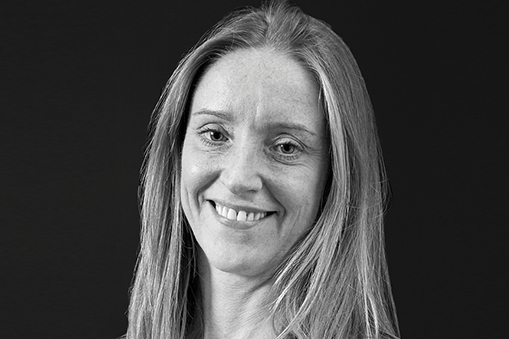Alexandra Cain, moderator, Listed@ASX: Many retail investors came into the market over the last few years. How much of a factor was COVID in this?
Sarah Brennan, CEO, Investment Trends: One of the things we do at Investment Trends is track participants in the market, and it’s a great question to lead off with because what we saw was a huge jump in the number of retail investors coming into the market in early 2020, at the beginning of the pandemic.
We research Australian retail investors as well as investors in Asia, the US, UK and Europe. In all the countries, we’ve seen the number of retail investors jump dramatically from the start of the pandemic and over the last two years. We suspect there are probably several reasons behind this – in general, lockdowns provided more time and opportunity for retail investors to explore and learn about the market. This coincided with greater accessibility and cost-effective means for retail investors to transact as online and leveraged trading platforms rapidly evolved their offerings. In addition, in America, people received government stimulus cheques and in Australia, we assume the low-interest rate environment made it very attractive for retail investors to invest in shares.
Subsequently, the past six months have seen retail investor numbers drop as COVID has dissipated, and the pandemic-driven enthusiasm has eased.

Gemma Dale, Director SMSF and Investor Behaviour, nabtrade
“Our more mature, experienced investors are just so active."
Gemma Dale, director SMSF and investor behaviour, National Australia Bank: We saw the number of new applications to open a nabtrade account double from late February 2020 through to the end of 2020. But as soon as the market started to fall in early 2020, we saw this dramatic influx of new investors; to about three times the pre-2020 average by June. These investors recognised a good opportunity to buy shares when they were on sale. Everyone rushed in during that period. But it’s fallen away a bit now. Those heady days were absolutely wild.
In terms of trading behaviour, we had an 80:20, buy: sell split during that period. So 80 per cent of investments were buying and 20 per cent were selling during that period of February 2020 to December 2020, and that’s fallen away dramatically. So there’s much less trading and there’s much, much less buying now than there was. People were very aware of what was going on in the market and happy to do something about it.
Listed@ASX: On the surface that appears counterintuitive because in previous market cycles, retail investors would have tended to sell in a dip. So what’s changed?
Gemma: My view is the market massively underestimates retail investors. The idea retail investors are the dumb money and they panic and they are very emotional is the opposite of what we see. Our clients tend to be very keen to buy stocks when they are less expensive and sell them when the market gets too toppy.
So we see very contrarian behaviour in our investors. Very few of them are momentum traders; although there is always a bit of fun money in the market. But largely they are absolutely attuned to what is happening at an aggregate market level and they will buy a dip if they think it’s worth it. Although there is no interest at all in the current dip. The market is not cheap enough for them.
They like a 30 per cent sort of dip.
Sarah: Gemma, you said you had an 80:20 buy: sell split. So, are they buying from professional investors?
Gemma: So the 20 per cent was mostly people repositioning their portfolio. It wasn’t like they went to cash and panicked because the market was too volatile. They were mostly selling expensive stocks to buy cheaper shares.
Alec Renehan, co-founder, of Equity Mates: Retail investors have been underestimated for too long. The buying behaviour we saw during COVID really echoes a long-term, sensible approach to investing, which we may not see so much in the US market where meme stock mania really took over at that time. In terms of that moment in 2020, the speed of the dip was quite instrumental because it was in the headlines, everyone was talking about it and it bounced so quickly. People have internalised this idea of buy the dip or buy low, sell high, but it’s rare you buy the dip and you’re making money the next month.
This year has really shown that sometimes you buy the dip and it keeps dipping, but in March 2020, it was one very rapid, violent dip and then a pretty quick rebound. So that really contributed to a lot of retail investors saying, “I can do this and I can make money.” I think there were also shorter-term factors like working from home, and your boss isn’t looking over your shoulder, so people were able to open nabtrade accounts. So I think that helped.
I also think the fact there was no sport on at that time contributed to people trading shares. A lot of people all of a sudden had a lot of free time and, as much as we don’t like to admit it, Australia is a massive gambling country. I think we gamble more than anyone per capita and, all of a sudden, all of that money had to go somewhere. So, I think that contributed, but beyond those short-term factors, there are a number of longer-term trends COVID accelerated, but were always there.
Many young professionals are at that stage in their life where they’re earning more than they’re spending. They’ve got a pretty stable job, and traditionally it would be where they start looking to buy a house, and that avenue for wealth creation has just really been cut off.
So, for many people, the stock market is an alternative. You can’t buy a house, you get 0.01 per cent interest on your savings, so the stock market was seen as a good option. People took that moment when they were working from home to learn about the stock market. I think the longer-term trend was always there and will be there long after COVID.

Alec Renehan, Co-founder, Equity Mates
"This year has really shown that sometimes you buy the dip and it keeps dipping.”
Sarah: Our research also shows there has been a slight change in the profile of investors as we’ve come out of COVID; which goes to Gemma’s comments about ‘fun money’. What we’ve seen is a greater proportion of older experienced and younger experienced investors and a drop-off in what we call the younger inexperienced group. This group includes those who had the time during COVID to learn and play the market.
They are incredibly educated, they’re hungry for knowledge, and they are smart. I think Gemma said it beautifully – we underestimate the retail investor and their knowledge.
While people were at home, they had the time to explore education tools and podcasts. So, we have a smart group of people who are even better educated.
To give you a sense of how the market has changed, at COVID’s height, the younger inexperienced group made up about 32 per cent of the pie. That’s now dropped down to 26 per cent, with the younger experienced and the older experienced making up the difference. So that change in profile plays a bit to that phenomenon we saw as well.
Listed@ASX: Were the younger inexperienced investors everyone who bought Afterpay?
Gemma: All our investors owned Afterpay. It wasn’t just young people – literally everyone. If they didn’t have it, they bought it during COVID. Then they sold it when Square bought it and made $130 a share and were very happy. It’s not a kid thing. Afterpay was an everybody thing.
Sarah: Related to the different types of investors one of the questions we ask in our research is: why did you stop trading? We look at the number of new investors and those that are reactivating in the market, but we also look at the number of dormant investors. We have seen rising dormancy rates over the past twelve months, which we suspect is that younger inexperienced group. So, the question is, why have they stopped investing?

Sarah Brennan, CEO, Investment Trends
"While ETFs are increasing in popularity, individual shares are still dominant.”
The top answer is that they don’t have enough time to do the research and manage their portfolio, so it may be that they aren’t working from home as much and are back in the office.
They have potentially made losses and experienced the market volatility this year, perhaps the first time they have experienced this, and are also concerned about low expected returns – worried their portfolio is not going to get those sharp rises. This points to that younger inexperienced group and provides interesting insight into why they’ve gone dormant.
Listed@ASX: Interest rates have also gone up, so they have other assets in which to invest.
Gemma: We look at exactly what our investors are doing, although we don’t ask them why we just look at what they’re doing. We have also seen the young investors fall away. Although they have not sold. They are continuing to buy ETFs, which I find fascinating. One of the factors in the massive uplift in new investors is we’ve given them a really easy way to enter the market without having to make complicated decisions.
Listed@ASX: What sort of ETFs are they buying?
Gemma: They just buy the ASX 200 pretty much exclusively. Every now and then, they will invest in the S&P 500. We have one ASX 200 ETF in the top 10 every single day. Don’t ask me why it’s Vanguard, but it is. That’s what they buy, day in, day out.
Listed@ASX: So, what’s the message for listed businesses? Because if people are buying ETFs, how can listed businesses communicate to these new, informed shareholders?
Bryce Leske, co-founder, Equity Mates: Form a single stock ETF. You may laugh, but we have seen it overseas. There is a single stock Tesla ETF.
Sarah: While ETFs are increasing in popularity, individual shares are still dominant. Around 37 per cent of all trading is Australian shares versus ETFs, which make up about 10 per cent of trades. In terms of where investors get their information, podcasts are huge and so is social media, particularly for the younger age groups. Influencers, social media and where investors are getting information from, is a fascinating topic for companies to consider.
Alec: The first thing is to focus on growing your business and you’ll get a bigger weighting in ETFs. This is a real peak moment of uncertainty and retail investors aren’t leaving the stock market, but they are moving to broad-based market ETFs. Whenever people are feeling bullish again, there will be individual stocks that once again capture people’s attention, but not at this moment when there’s a lot of pessimism.
Listed@ASX: How important is it for companies to segment their shareholder base?
Sarah: The shareholder base is not homogenous anymore. Companies must look at the different segments, such as experience in the market, age, gender, and the size of the portfolio.
Gemma: Different investors display different characteristics. One of the interesting things around ESG is people always assume it’s consumers and the younger profile who are passionate about it, rather than the older age groups. The research shows that’s a myth. Pre-retirees and retirees are just as invested in it, often because of their kids and their grandkids.

Bryce Leske, Co-founder, Equity Mates
"Stop putting shareholder meetings and AGMs at 11:00 am on a Tuesday.”
Listed@ASX: What’s your advice to companies to ensure their ESG information isn’t just greenwashing?
Gemma: There’s not a mining company out here that doesn’t put out their annual report without a pretty girl in a hard hat on it. Once you point it out, you’ll see it everywhere. So, we’re still very embryonic in the communication process with ESG. Companies publish ESG and net zero statements. But the focus must shift to the impact companies are having on the environment and their stakeholders.
Listed@ASX: We’re coming to the end of our time together. What’s your final message when it comes to communicating with retail shareholders?
Alec: Retail investors are growing in number, they’re growing in dollar size, and they are often some of your most loyal investors. They will often provide stability to a shareholder register that some big institutions may not. And the way that we’ve traditionally communicated with them no longer works. There are fewer advisers in the market, which has led to a growing gap of unadvised retail investors who are having to figure it out themselves. And if you don’t have strategy to speak to that unadvised retail investor, you’re missing a big and growing part of your potential shareholder base.
Sarah: We’re going to see continued growth and greater diversification of the retail shareholder base. They are critical for companies. They are active, they are educated, and they will grow as an important consideration for companies. Ignore your retail shareholders at your peril.
Bryce: Stop putting shareholder meetings and AGMs at 11:00 am on a Tuesday. This disenfranchises retail investors who have full-time jobs and cannot participate in these events. And stop serving chicken sandwiches and morning tea.
Gemma: People are extremely careful with how they invest their own money. The vast majority want to make very astute, well-informed decisions, that will pay off over time. So, they care about what companies do. It’s a real opportunity for companies.
Related links
